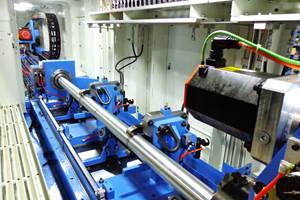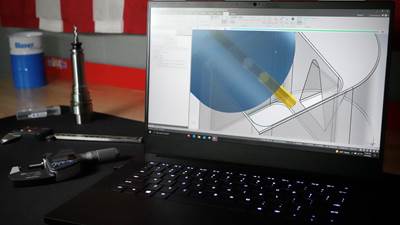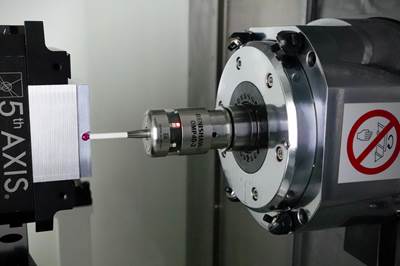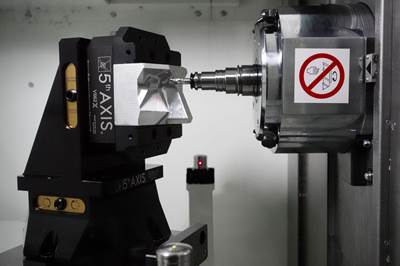How Lowering Torque Improves Tapping Tool Life
Escaping the tap breakage trap requires a long look at torque and the many factors that influence it.
Share





Reader Question
I find myself breaking more taps than I am willing to admit. I follow the standard drill chart for UNC/UNF threads, use good quality cutting taps and tapping oil and use floating/tension tap holders, but I am still nervous every time I tap a hole in mild steel or aluminum. I feel that the drill charts were written before 1940 and are outdated for modern tools of today. Can you shed some light on the maximum possible hole size when tapping holes?
Miller’s Advice
While you’re on the right track, I would not view this problem as strictly related to the maximum possible hole size. Increasing the pre-drill size can certainly help the issue by reducing torque on the tap, but too large of a pre-drill will weaken the threads and may cause quality issues for customers and end users.
To avoid breaking an unnecessary number of taps, assess the entire system and adjust accordingly. Photo: Way of the Mill
To reframe the question, we can simply ask “why do taps break?” Most often, we put too much torque on them or apply the torque too quickly. Reducing these spikes in torque should result in better threading. Doing so requires careful consideration of thread requirements, chip management, proper pre-drill size, proper holder types, external conditions and more.
First, we must understand the final thread requirements from the customer. Type, size and pitch are obvious, but we should also confirm blind or through-hole and whether roll-forming or cut tapping is required. The blind/through-hole condition will affect whether we choose a spiral tipped tap that pushes chips down through a hole, or a spiral flute tap that pulls chips out of a blind hole. Not needing to pack chips greatly mitigates torque spikes.
Form type also affects process in several ways. First, formed threads receive larger pre-drills. Form tapping also calls for a slightly higher coolant concentration (I generally increase about +2%). Lastly, working in a “work hardening” material requires countermeasures for the way threads will harden during tapping. This last point is not a big issue with aluminum, but can cause problems in some stainless grades.
Longer leads are better for gradually producing treads. Depth requirements may require taps with short leads, however. In these instances, it might be beneficial to chamfer the hole before tapping to create an artificial lead and ease the tap into the hole this way.
NPT threads can be especially difficult due to their taper. In softer metals, directly following drilling with tapping may work out fine. A better option is to use a tapered reamer between the pre-drill and tap. This will further form the hole, so the NPT tap experiences a more gradual load rather than a torque spike as the larger diameter engages.
Traditional drill and tap tables are useful for baselines once the hole requirements are known — but the generic tables are for cut threads only. Using the same numbers for form threads will almost always lead to breakage. Confirm with your tap vendor what they specifically recommend for your specific taps. Today’s taps cover every material and specialty, so the form tap standards of yesterday rarely apply. I’ve personally seen pre-drill sizes from two big-name tooling companies differ as much as 0.006” for the same standard thread size.
If you find yourself stuck, these two formulas can get you close:
For cut threads:
Pre-drill = Thread Diameter – Thread Pitch
For an M10x1.5, 8.5 mm = M10 – 1.5P
For form threads:
Pre-drill = Thread Diameter – Thread Pitch/2
For an M10x1.5, 9.25 mm = M10 – 1.5P/2
If your equipment doesn’t exactly meet the pre-drill requirements, you can always mill or interpolate the right pre-drill size.
Floating/tension holders can be great, but are typically only necessary for creating longer taps, such as in long-reach NPT tapping. Standard bolt hole patterns and shallow threads should be no problem for today’s machines.
Properly assessing the system — all the factors surrounding thread-making — is important. High-priority factors to check include sufficient coolant delivery, correct program pitch and amount of runout in the pre-drill or tap.
Thread milling is a good alternative to tapping, with many benefits. So long as you understand the programming, thread milling provides the flexibility to run multiple thread types or pitches. It is more forgiving with pre-drill sizes, and compensation as the tool wears improves tool life while continuing to make good threads. Even in the event of tool breakage, the tool will not be firmly lodged in the part, improving the odds that the part can still be reworked. For these reasons, thread milling is usually my go-to option for hard metals.
Want Miller’s help solving your machining challenges? John Miller, owner of Way of the Mill CNC training and consulting, will use his machining expertise to answer a reader-submitted question in his column each month. Submit your question here!
Related Content
Kennametal's Expanded Tooling Portfolio Improves Performance
The company has launch eight new products that expand on and support existing platforms across multiple applications.
Read MoreHeule Tool Enables Spot Facing of Difficult-to-Reach Areas
The manually actuated bkac spot facing tool is well suited for large boring mills and other open-air machines.
Read MoreCeratizit Offers Custom Boring Tool for Heavy Goods Vehicles
The boring tool roughs, chamfers and reams/fine finishes holes in a single operation.
Read MoreKay Engineering's Gundrilling Machine Performs Range of Operations
Kay Engineering’s DeHoff 20144 is used to perform gundrilling, pull boring, roller burnishing and thread tapping.
Read MoreRead Next
How to Tackle Tough Angled Pocket Milling With Two Tools
Milling a deep pocket with a tight corner radius comes with unique challenges, but using both a flat bottom drill and a necked-down finishing tool can help.
Read MoreWhat Should Machinists Know About In-Machine Probing?
In-machine probing doesn’t reach the power of CMMs but can still be useful for pre- and mid-process control, as well as for “rough screening” of parts.
Read MoreReducing Machine Cycle Times Both In and Out of the Cut
Increasing automation means setup times are lower than ever. How can shops optimize cycle times to match and win more business?
Read More















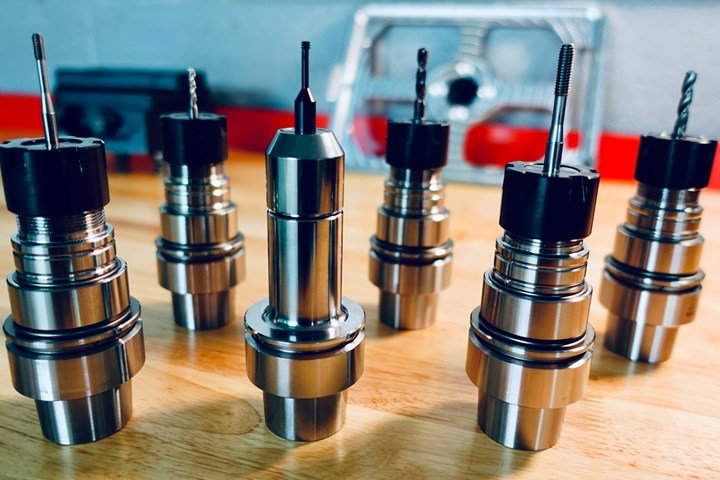




.png;maxWidth=300;quality=90)






